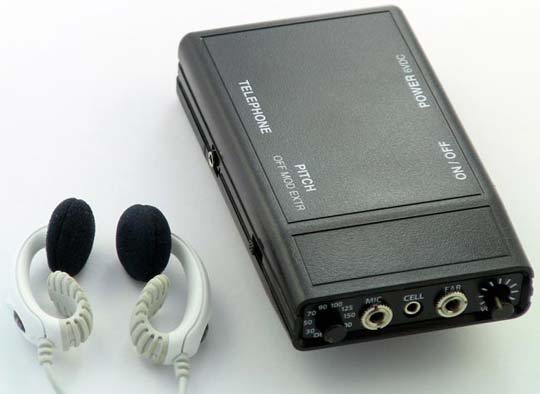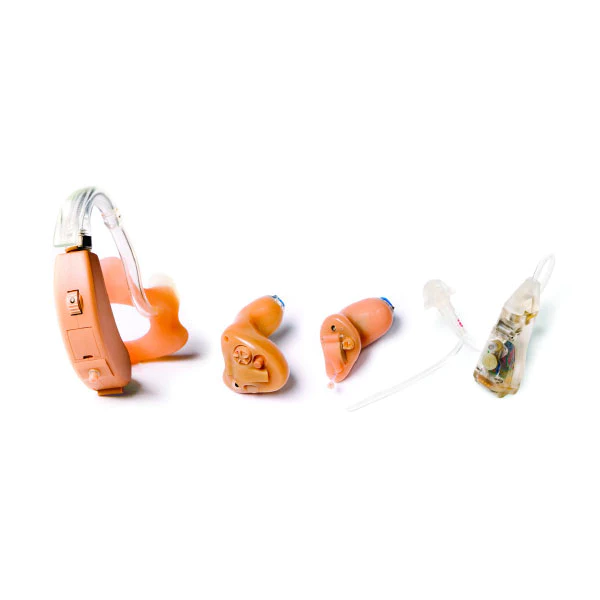For people who stutter, Electronic Fluency Devices may be used to enhance fluency in speech production. These devices alter the feedback users receive when speaking to create a choral effect, or the perception that one is speaking in unison with others. Choral speaking is used to increase fluency or decrease stuttering, and is found in devices like SpeechEasy.

What is Assistive Technology?
Electronic Fluency Devices are a form of Assistive Technology, which are technologies (low- to high-tech) that help people work around challenges so they can learn, communicate, and function together (What is Assistive Technology?). While Assistive Technology (AT) products are typically designed for people with disabilities, they can make the web and world more accessible for other users as well.
With Electronic Fluency Devices, the target users stutter. Stuttering is a “difference in speech patterns, involving disruptions or “disfluencies” in a person’s speech” (National Stuttering Association). People who stutter may experience repetition, prolongations, and/or blocks in speech. An estimated 1% of adults stutter, although it is difficult to quantify this with certainty. Studies are also inconclusive about the effectiveness of AT like Electronic Fluency Devices for a consistent “cure” to stuttering (National Stuttering Association). The National Stuttering Association places “cure” in quotations because disability is not a problem seeking cure. This idea stems from the Medical Model of Disability, which investigates an individual’s biology and offers medical remedy (100 Days of A11y). This model overlooks opportunities to reframe lingual conventions and social expectations to be more inclusive to stuttering.
How SpeechEasy works
SpeechEasy, a company that develops Electronic Fluency Devices, creates products that may appear to be hearing aids, but instead of amplifying sound, slightly echo and alter a user’s speech. The idea behind this technology is that people have increase speaking fluency when speaking in unison with others (Cleveland Hearing and Speech Center). If you have ever recited The Pledge of Allegiance, a song, or a prayer with a group of people, you may be familiar with this feeling. A person who stutters may stutter less frequently when this device makes it sound like multiple people are uttering the same thing they are.
According to testimonials from users of SpeechEasy products, this form of AT helped smooth speech for things like giving presentations, making new friends, and boosting confidence. One user recommended combining SpeechEasy with skills learned from a Speech Pathologist, including slowing breathing and stretching out vowel sounds.
SpeechEasy’s products
There are four options when selecting a SpeechEasy product depending on the needs, preferences, and budget. SpeechEasy ranges from $2,500 to $4,500 and is not covered by insurance or Medicare/Medicaid.
- The “Comfort Fit” device appears to be constructed with clear silicon, exposing the mechanics of the technology behind the ear. This model prioritizes utility and comfort over aesthetics, are likely is the least costly.
- “Completely In Canal” is the smallest device available, and sits completely inside the ear canal. A beige tone is displayed, with no indications that other skin tones are available. Because of the small adjustment knobs, this model prioritizes discretion over the ability to change the volume, requiring a high level of hand dexterity. It is unclear whether these products are offered in various skin tones, although I suspect not.
- “In the Canal” more evenly weighs the tradeoff between size and ability to control volume, but still may be difficult for people who have trouble with fine motor skills. A beige tone is displayed, with no indications that other skin tones are available.
- “Behind The Ear” attempts to solve this with volume control accessed more freely behind the ear. It has a clear tube joining the inner-ear piece and the volume control. This model seems to consider aesthetics, comfort, and volume control. A beige tone is displayed, with no indications that other skin tones are available.

How does this product measure up to the needs of people who stutter?
SpeechEasy’s products may fall into the Functional Solutions Model of Disability, which focuses on advanced solutions to problems encountered by disabled folks. This implies that disability is a problem to be solved (100 Days of A11y). Companies like SpeechEasy care less about social and political nuances related to stuttering, and more about innovation. Tools like SpeechEasy provide a creative solution to decrease the prevalence of stuttering in speech.
Still, people who stutter may choose not to adopt an AT like SpeechEasy. Disability is a point of pride and can be a significant part of a person’s identity. Many people who stutter take pride in their disability and have built communities for Stutterers. This is the Social Identity Model, which aligns with more recent moves toward individuality and reclaiming facets of our identities that are traditionally stigmatized (100 Days of A11y).
What can we learn from this as designers?
When designing a product, accessibility should be considered throughout the process. This can only be done by speaking directly with potential users of the product, rather than making assumptions about their behaviors and lifestyles. Designers and non-designers alike should recognize that not all disabled people want solutions, but instead want greater efforts toward inclusion and acceptance.
For information and resources related to stuttering, visit the National Stuttering Association at westutter.org.
